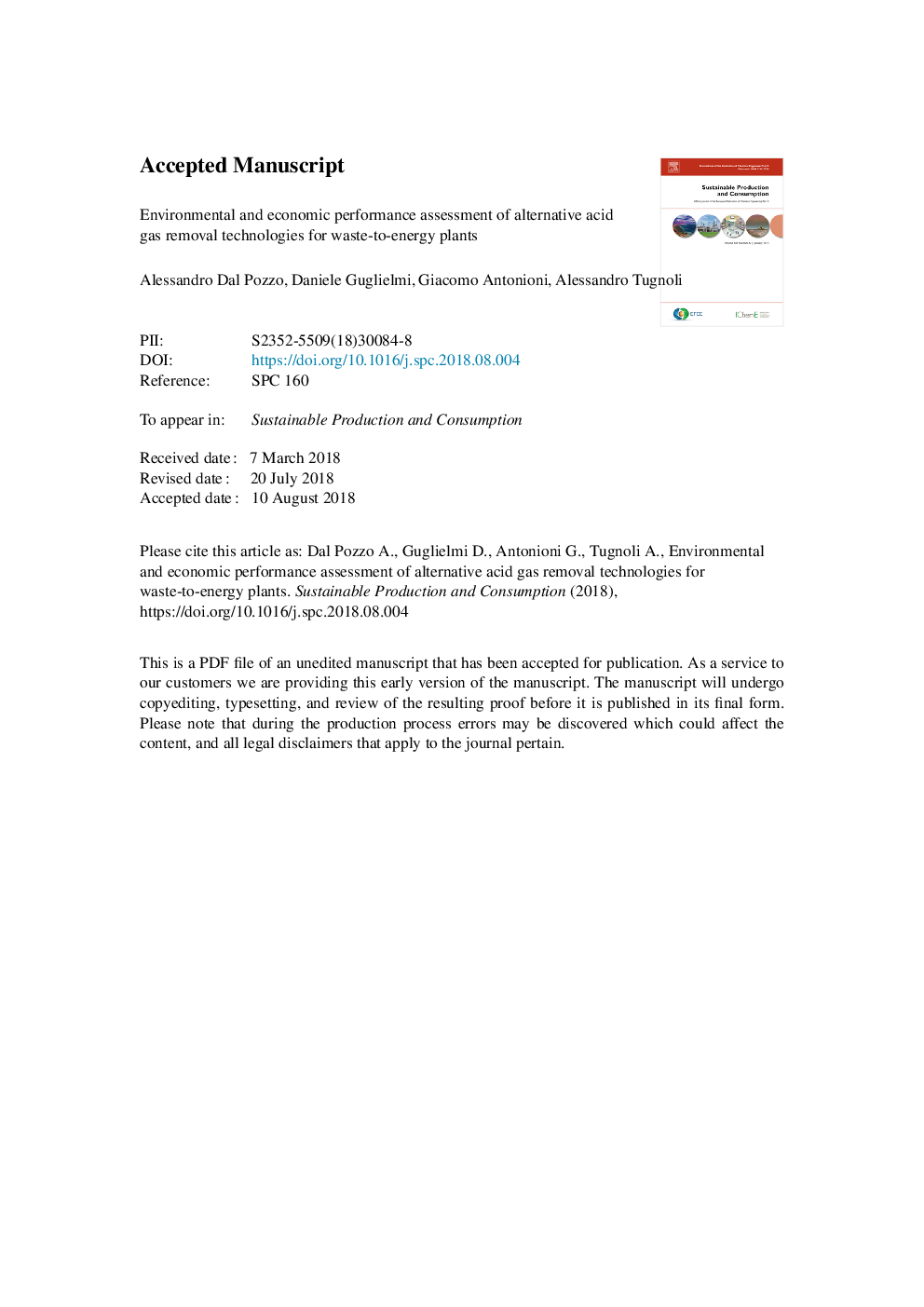| Article ID | Journal | Published Year | Pages | File Type |
|---|---|---|---|---|
| 11003515 | Sustainable Production and Consumption | 2018 | 35 Pages |
Abstract
The present study analyses and compares state-of-the-art dry, semi-dry and wet process configurations for acid gas removal in waste-to-energy plants. The performance of five representative process schemes was analysed: the streams associated with acid gas emission control were quantified via mass and energy balances and a life cycle perspective was applied in order to evaluate the inputs and outputs of the supply and disposal chains. The analysis pinpoints the key issues in terms of environmental and economic performance of the presented alternatives. Benefits and limits of the alternative technologies are discussed in view of different waste composition. The energy penalty associated with flue gas reheat appears to be the main environmental drawback of wet methods, while the main contribution to the environmental footprint of dry methods is given by the production of solid reactants. Multi-stage treatment systems systematically show lower environmental impacts than the single stage counterparts, but their cost-effectiveness is limited by the disposal cost for the generated solid residues. The provided insights can contribute to a more effective implementation of the strategies of circular economy and cleaner production in the operation of a waste-to-energy plant.
Related Topics
Physical Sciences and Engineering
Chemical Engineering
Process Chemistry and Technology
Authors
Alessandro Dal Pozzo, Daniele Guglielmi, Giacomo Antonioni, Alessandro Tugnoli,
